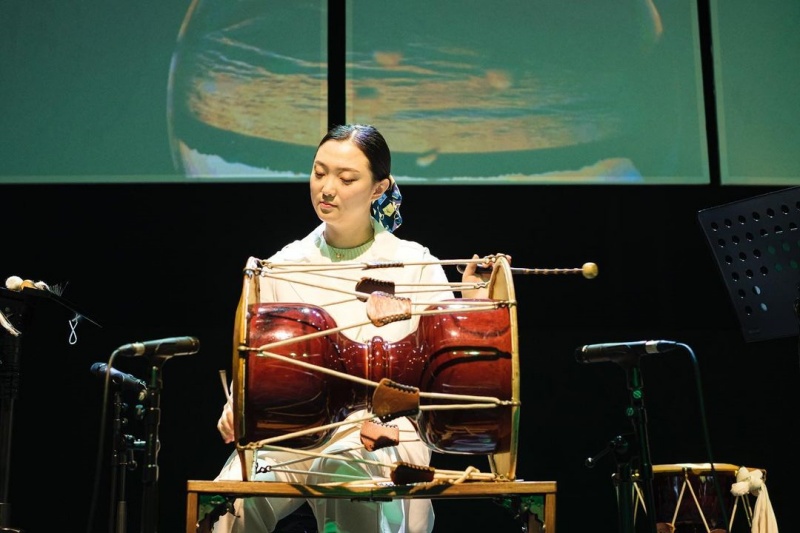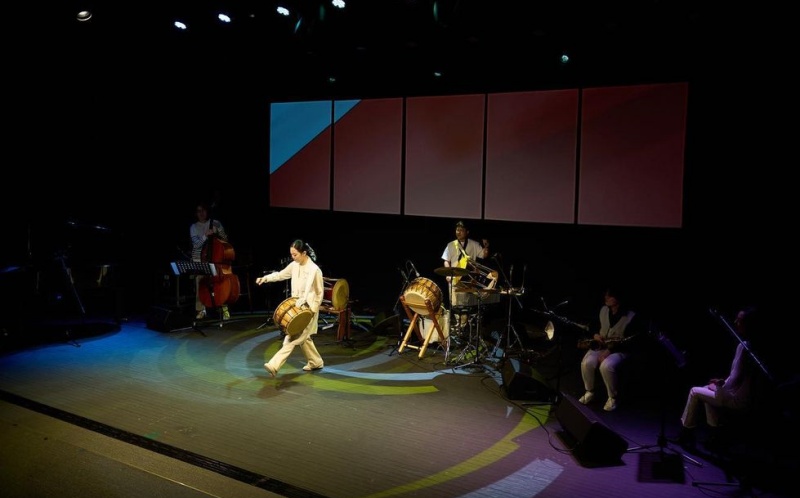- 한국어
- English
- 日本語
- 中文
- العربية
- Español
- Français
- Deutsch
- Pусский
- Tiếng Việt
- Indonesian
By Honorary Reporter Oshini Jayamuni from Sri Lanka
Photo = Kim Ji-hye, Soorim Cultural Foundation
Kim Ji-hye is a musician and composer specializing in traditional Korean music. Her skill in playing the janggu (hour-glass shaped drum) is widely recognized and she has received awards at many contests including the World Samulnori Competition (samulnori is traditional farmer's percussion music). She made her stage debut in 2007 with samulnori pioneer Kim Duk-soo.
Graduating from Korea National University of Arts, Kim went on to study at Berklee College of Music in Boston, graduating in 2020 and earning the Fletcher Henderson Composition Award. Now back in Korea, she promotes the fusion of Korean and jazz music as a composer and performer.

The following are excerpts from a written interview with Kim on Feb. 14.
Why did you choose the janggu as your main instrument?
This instrument is widely used in all genres of traditional Korean music. It is the main instrument in samulnori and provides accompaniment in traditional instrumental music.
How is it being a percussionist, performer and composer of traditional music?
I find similarities in being a percussionist and performer as both play music and perform on stage. But composers need the perspective of a producer, so they need to see an entire work. So as a performer who plays music and performs on stage as well as a composer who produces music, I think it takes a lot of effort to play both roles.

How did your curiosity over the convergence of traditional Korean music with other genres lead you to Boston?
Berklee College of Music had students and professors from around the world, and through this, I learned a lot about music and experienced different cultures. In Korea, I majored in traditional Korean music, but at Berklee, I focused on jazz composition. Sometimes for my assignments, however, I composed and submitted music using Korean rhythm, and I've since continued to create songs combining traditional Korean rhythm and jazz. My music seeks to incorporate these elements while I create my own sound and color.
What is your vision for samulnori in the modern world?
I think of it as passionate energy with rhythms that bring out the original tone of percussion. Samulnori is popular as many people can easily learn and enjoy it.
Any message to aspiring musicians and Korea.net's readers?
For those dreaming of becoming musicians, rigorous practice is good, but I stress thinking about expressing your own sound. And I hope for more global interest in and love for traditional Korean culture.
enny0611@korea.kr
*This article is written by a Korea.net Honorary Reporter. Our group of Honorary Reporters are from all around the world, and they share with Korea.net their love and passion for all things Korean.